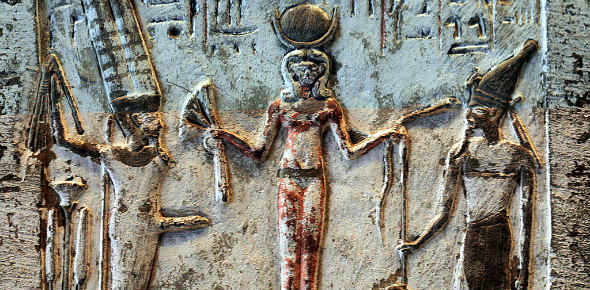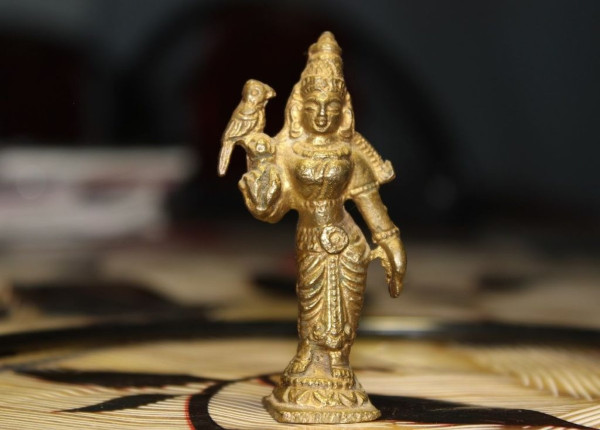Deity practice brings us into direct unmediated relationship with the gods. We can bring them into statues, bring them down around ourselves, or lift ourselves in meditation to the realm of the gods to commune with them there. This practice was common for several thousand years, extending from Egypt/Kemet through the Mediterranean to India. In Egypt the practice was ended by the Moslem conversion. In Europe deity practice was driven underground by the Christian opposition to Pagan ritual. In India and Nepal deity practice is alive and well in the great public temples, simple home pujas, and deep lineaged wisdom of the Tantric teachers.
In Greece and the Hellenistic world the practice was called “theurgy”, god-work. Teachers instructed students in deity practice along with courses in philosophy and mathematics. There were public classes like those held today in universities, in fact the first Academy was in Athens founded by Plato himself. The teachers also held private lessons for a circle of students to teach the deeper mysteries, just as Tantric teachers have private students today.
The practice is built on a foundation of folk worship. Everyone from the most noble to the poorest child and slaves participated in the festivals of the gods. Looking to India today every city and town has a temple which celebrates the special festival of their devis and devas. There are a few festivals that transcend the regions and are celebrated everywhere, like Holi which marks the beginning of spring, and Navratri or Durga Puja in the fall, both of which celebrate the victory of the gods over the wickedness of humans and demons. In the Hellenistic world every city had a patron; Athena famously protected Athens, and her temple still soars at the top of the Acropolis.
Statue practice
In the Hellenistic world each home had an altar with the family’s particular deities. In India today apartments feature built-in cabinets for the family murtis or statues. Many Pagans keep house altars with statues, pictures, and power objects meaningful to the family. Statues may be taken down for a specific ritual, or the altar itself is the focus of devotion. Hindu families pull down a murti to offer a puja for the specific deity on their special day or when a need arises. The elephant headed god Ganesh is celebrated on Ganesh Chaturthy yearly, but pujas may be offered at any time the family encounters a difficulty to ask him to remove it.
This is the first step in deity practice. You build an altar to the deity, focusing on a statue or a picture, then add objects associated with the deity, and offer incense, food and drink to the deity. The statue itself is an offering to the deity as you are providing a home where the deity can reside. In the ritual you offer the incense and food, offer a prayer, then eat the food. In the food the deity returns a blessing to the practitioner.
Bringing down the deity
The second step in deity practice, bringing the deity down around you, is done in meditation. You take your meditative seat and then see and feel the deity surrounding you and interpenetrating you. You call the deity and focus their presence by chanting their name. You can also sit in silence.
To understand what is happening here it’s helpful to have a framework for understanding who we are. Each of us is a physical body. This body is animated by a spark of spirit which is immortal and transcends the body’s life and death. There is a third part to each human being which is variously called the subtle body, the soul’s body, the star body, or the body of light. This star body is strengthened by our practice. The deity manifests in the star body. You can think of the star body as the temple in which we meet the goddess or god.
Rising to the deity
The third step in deity practice is also a meditation. When you feel and see the deity in your star body, your star body can fly up to the stars. There you can meet the deity and be enfolded in their embrace, floating in their presence.
Daily practice
It’s called a practice because it’s something that you do all the time. Tantric practitioners sit in a meditative seat each day to chant and visualize the deities. Once you have established a contact with the deity you can continue the practices of bringing down the deity and rising to the deity.
Which deity?
This is a practice which can include any deity. I should quickly add the caveat that some deities have existing practices that we should honor. If we are taught how to approach a deity, like an Orisha or a Tantric deity, we are honor bound to respect those practices and keep their secrets. That said, deity practice is widespread and common, and any deity that calls you can be offered your devotion.
I have practiced theurgy, the Hellenistic form of deity practice, with the twelve Olympian deities. I have conducted a year-long theurgic practice calling one of the deities each month. I’ve launched a new year of theurgic practice. I will be making a video of the initial ritual and another video to explain the daily practice. Here is a video introduction to deity practice. I invite you to come along with me on the journey!




